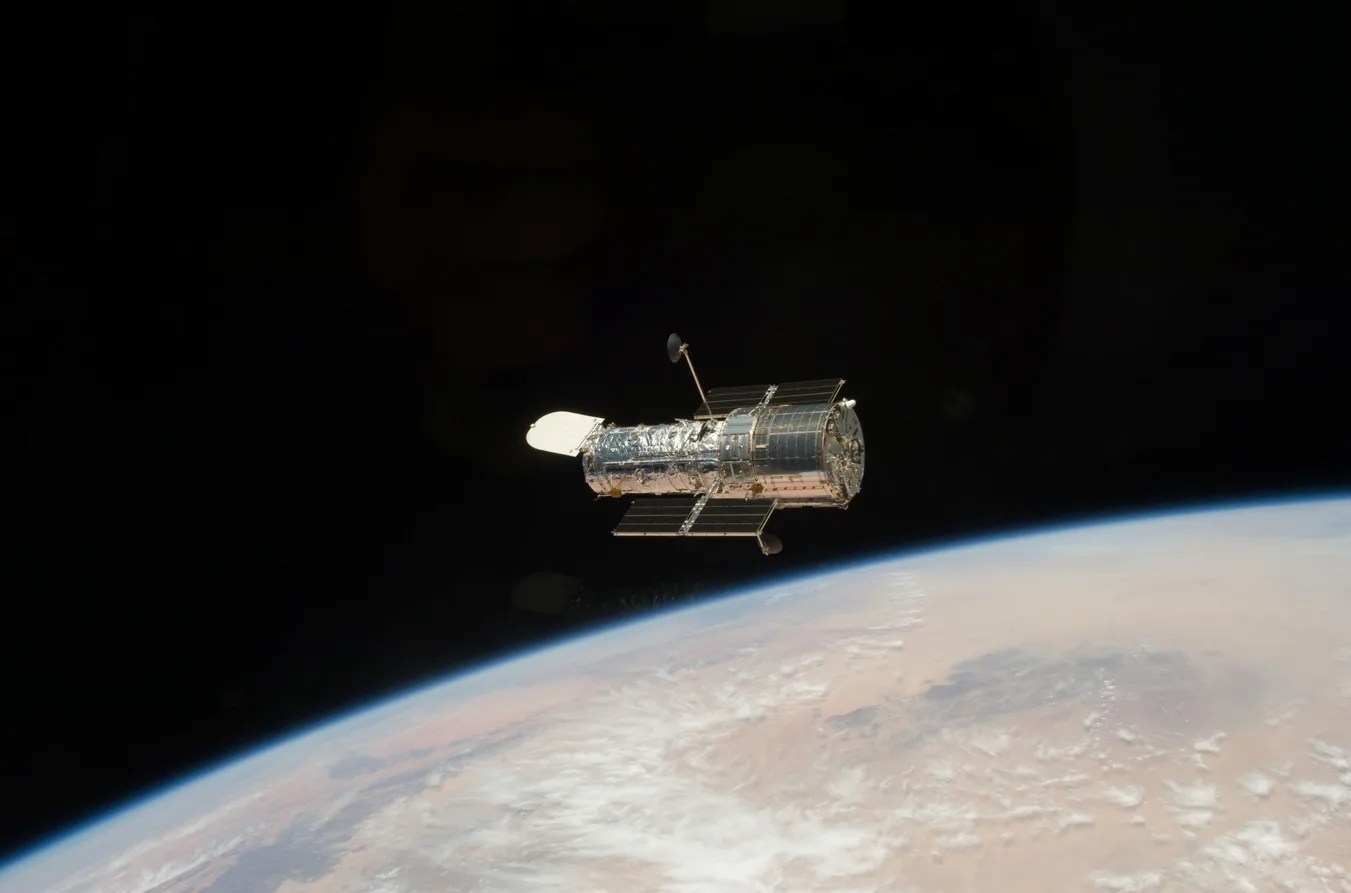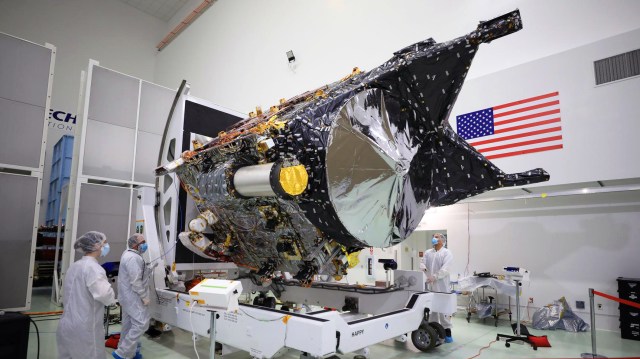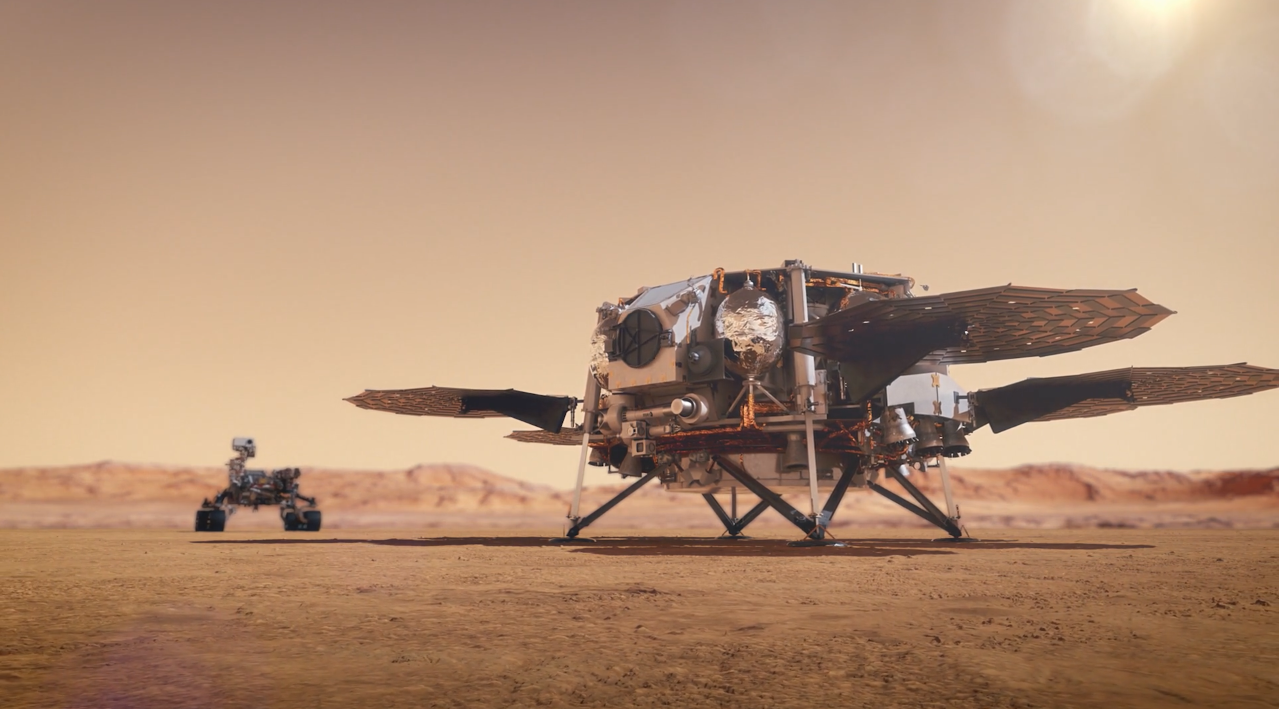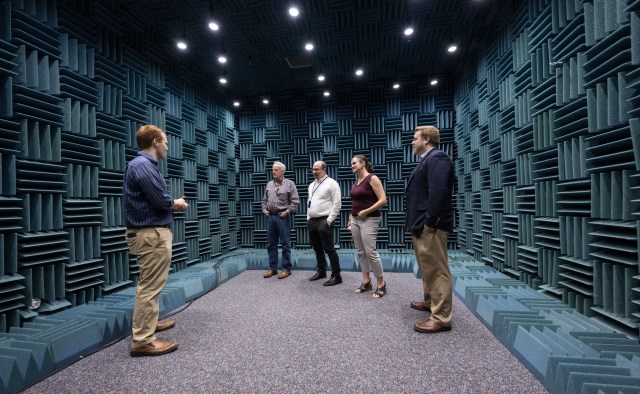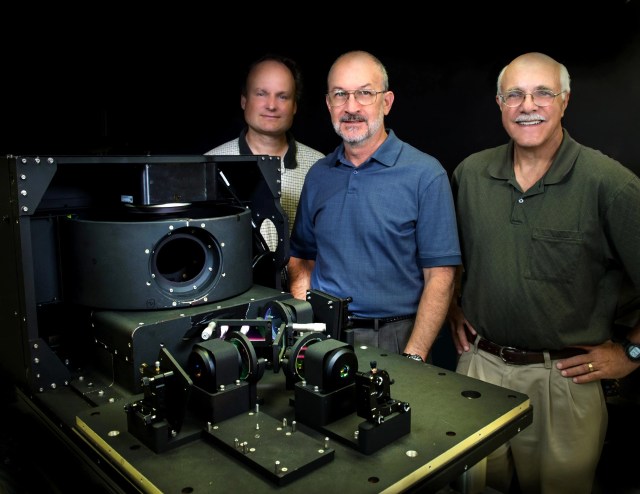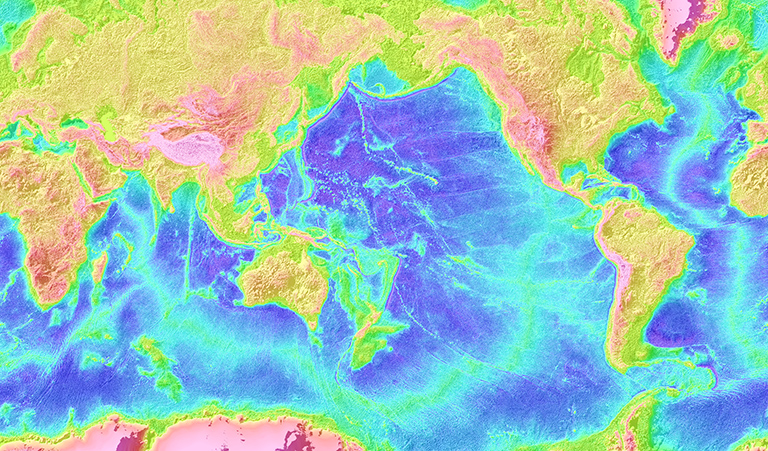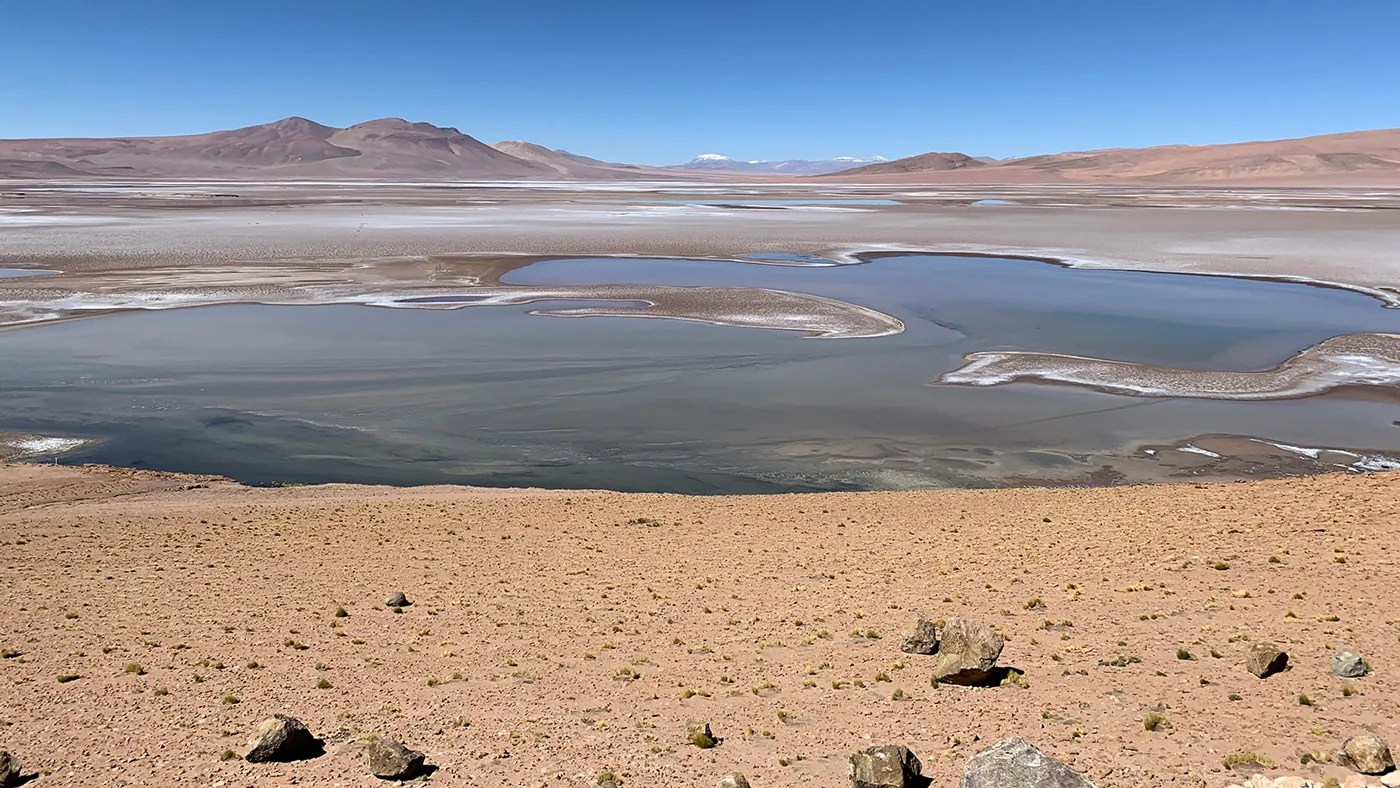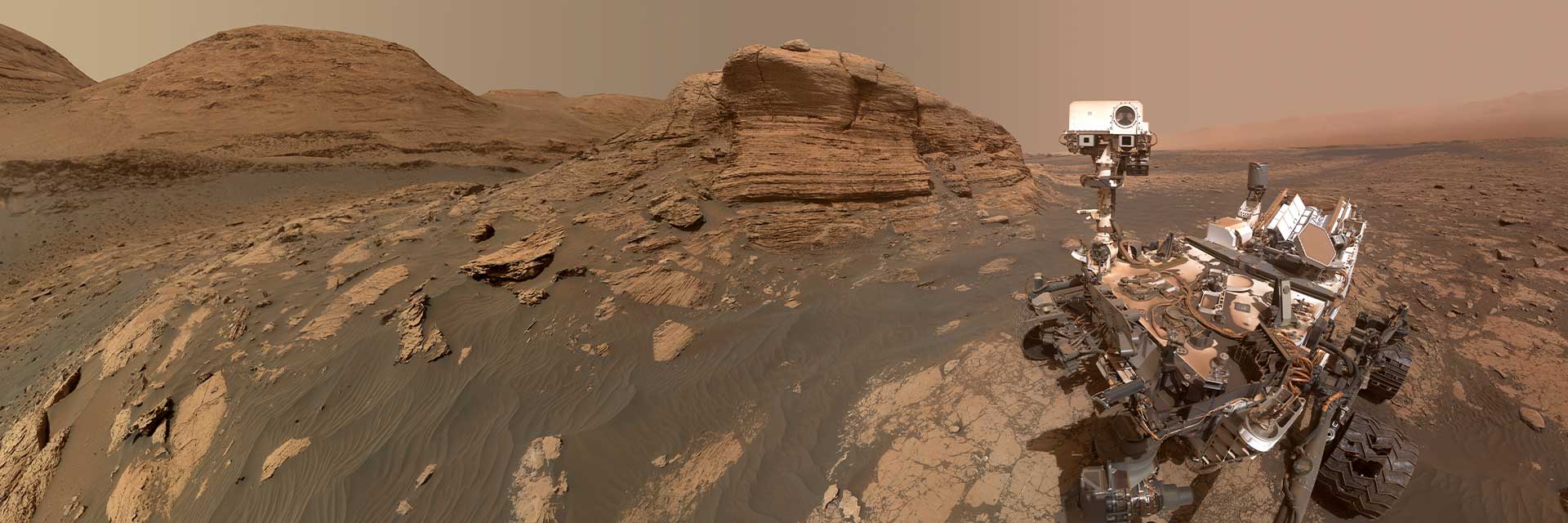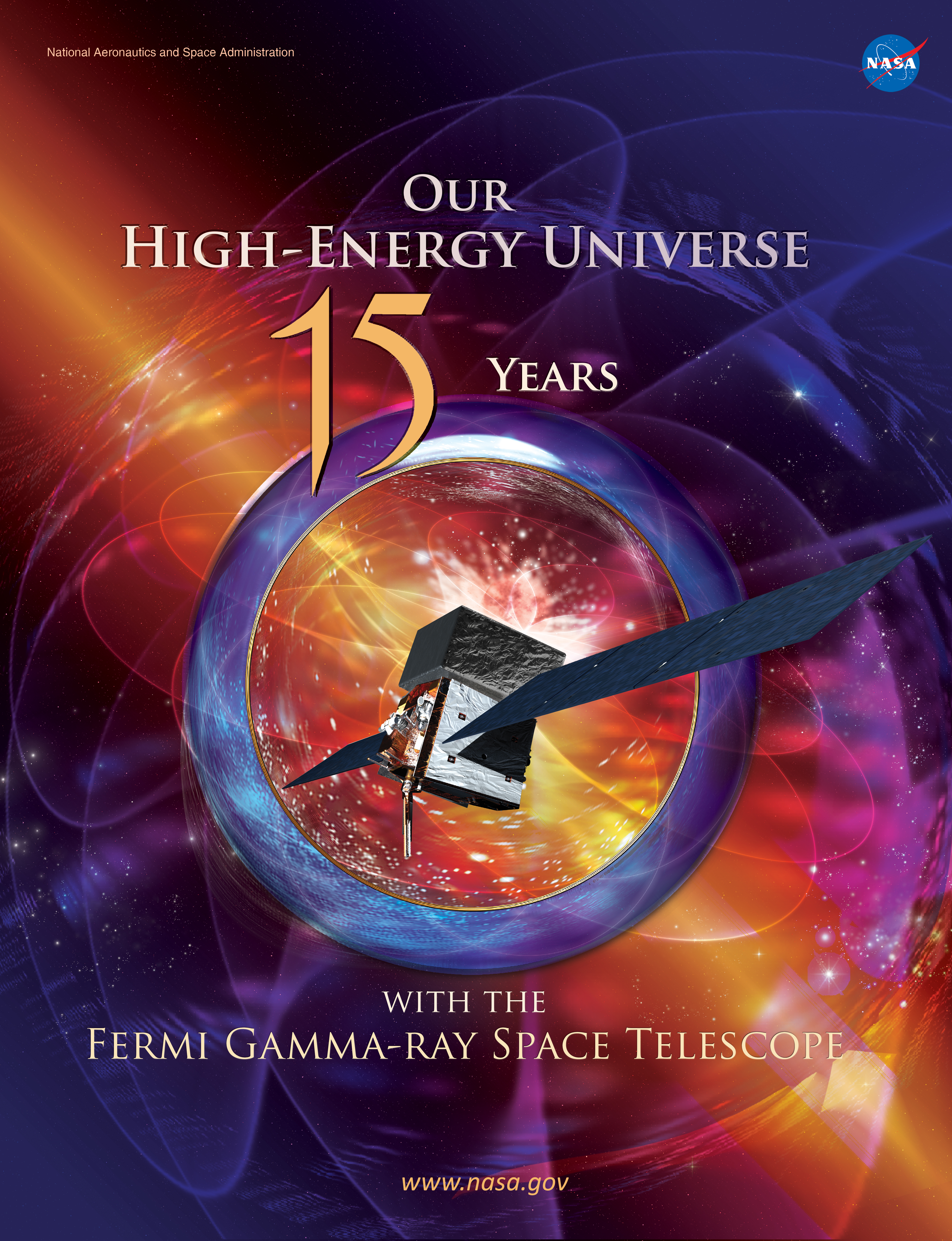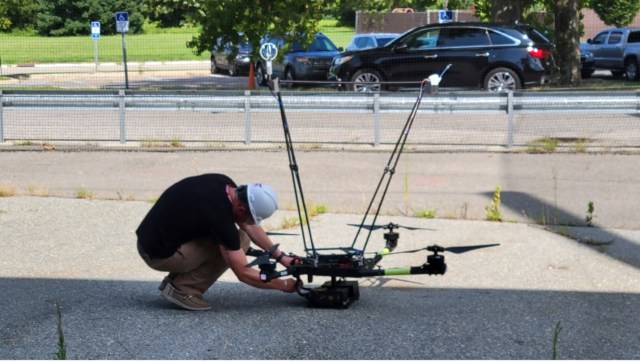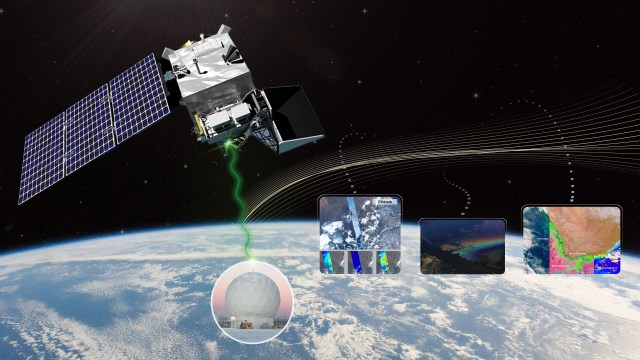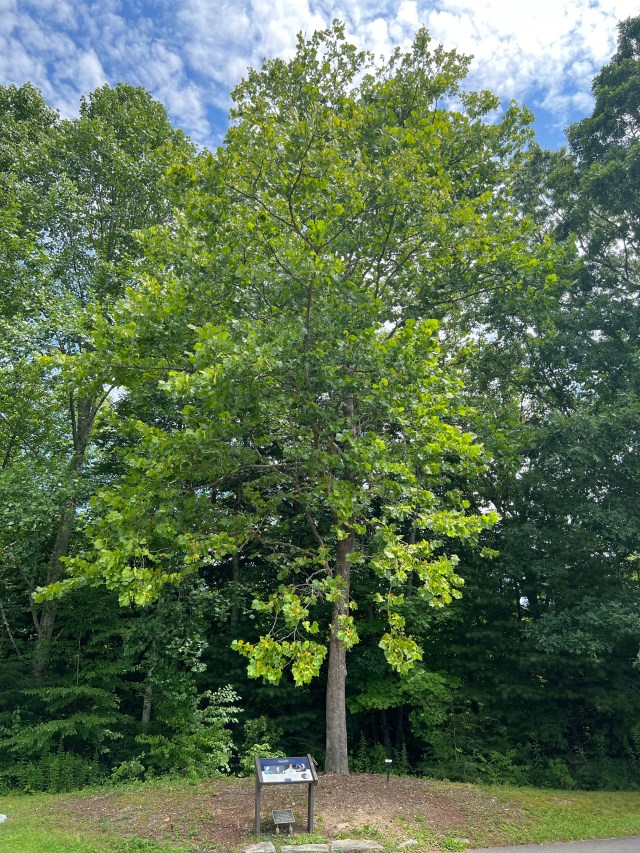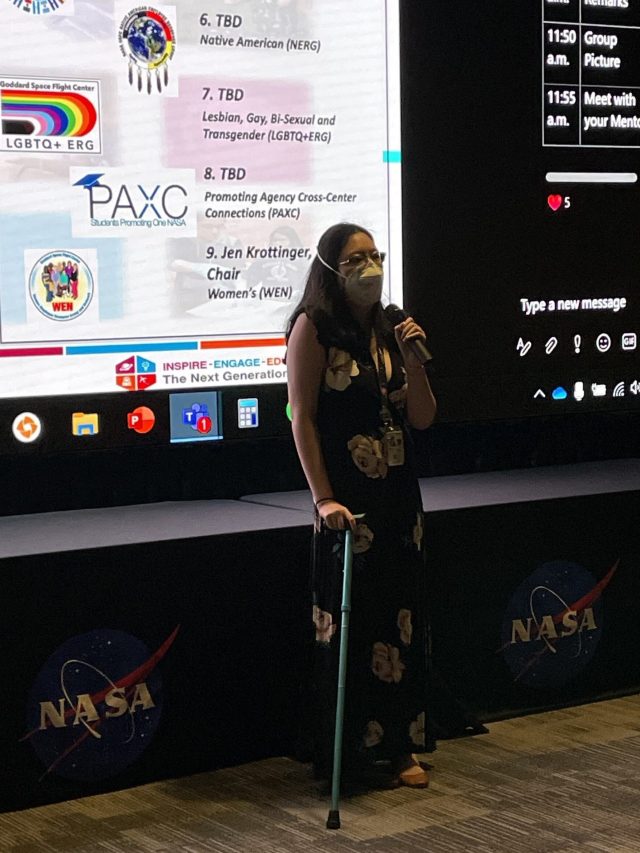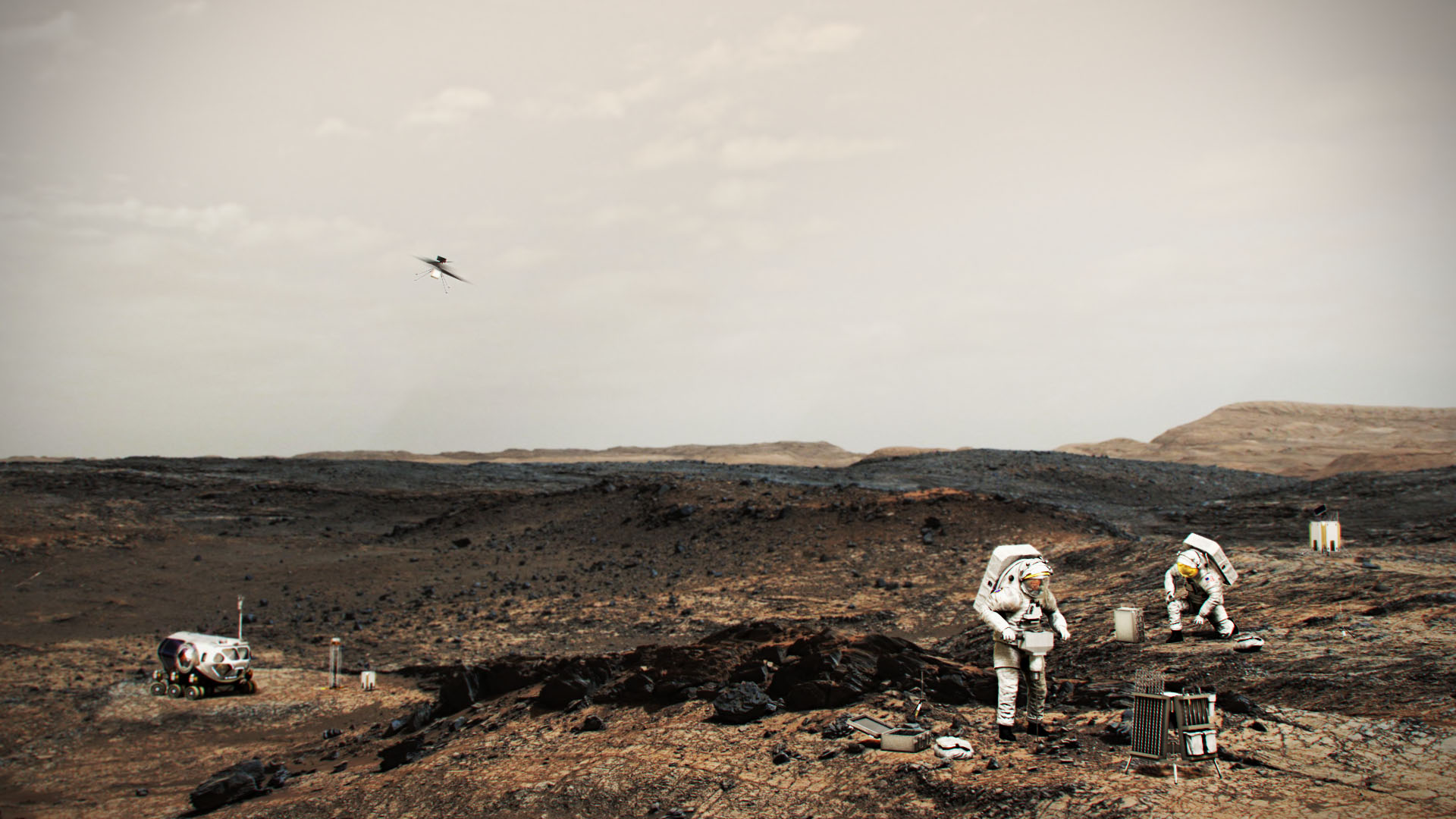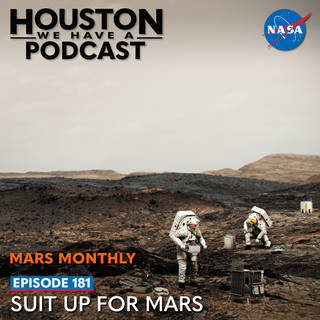
If you’re fascinated by the idea of humans traveling through space and curious about how that all works, you’ve come to the right place.
“Houston We Have a Podcast” is the official podcast of the NASA Johnson Space Center from Houston, Texas, home for NASA’s astronauts and Mission Control Center. Listen to the brightest minds of America’s space agency – astronauts, engineers, scientists and program leaders – discuss exciting topics in engineering, science and technology, sharing their personal stories and expertise on every aspect of human spaceflight. Learn more about how the work being done will help send humans forward to the Moon and on to Mars in the Artemis program.
We have new cover art! Don’t worry, Houston We Have a Podcast is still the same show you know and love. Check out other NASA podcasts and their new cover art at nasa.gov/podcasts.
On Episode 181, Natalie Mary, spacesuit systems engineer, explains what needs to be considered in the design and operation of a spacesuit that will be used to explore the surface of the Red Planet on the tenth episode of our Mars Monthly series, where we drop a new episode about a human mission to Mars on the first Friday of every month. This episode was recorded on January 20, 2021.
Check out the Houston We Have a Podcast Mars Page for more Mars Monthly episodes.
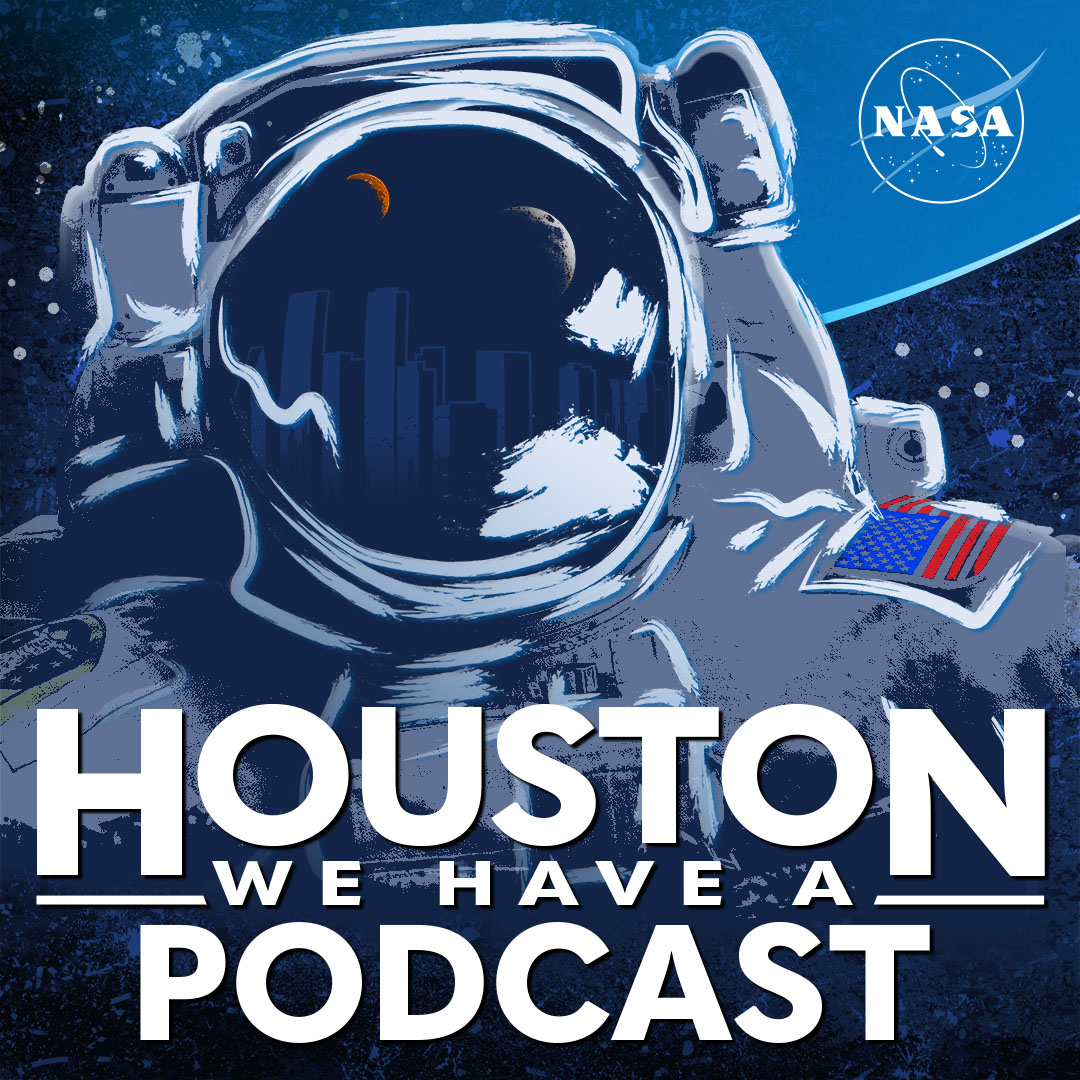
Transcript
Gary Jordan (Host): Houston We Have A Podcast. Welcome to the official podcast of the NASA Johnson Space Center, Episode 181, “Suit Up for Mars.” I’m Gary Jordan, and I’ll be your host today. On this podcast, we bring in the experts, scientists, engineers, and astronauts. All to let you know what’s going on in the world of human spaceflight. So, we’re continuing our “Mars Monthly” series on first Fridays. Last month, we chatted with Dr. Paul Niles about Mars, the planet. Its atmosphere, the pressure, some of the dust storms. There’s a lot that Mars will throw at humans exploring its surface. So, we have to be prepared with the right spacesuit. Luckily, we have a lot of smart people already thinking about how to address some of these issues. Things like those dust storms, mobility, and planetary protection. One of those smart people is Natalie Mary, a Systems Engineer for the Extravehicular Activity, or EVA Office. It’s her job to perform analysis and integration for the exploration EVA system with suit engineers and stakeholders from programs such as Artemis, Gateway, and Mars. So, let’s get right into it. Suiting Up for Mars with Natalie Mary. Enjoy.
[ Music]
Host:Natalie Mary, thanks for coming on Houston We Have a Podcast today.
Natalie Mary:Thanks for having me.
Host: What an interesting topic, Martian spacesuits, suiting up for working on the surface of another planet. It’s a huge deal. Natalie, I want to start with just understanding what it takes to work in such an interesting field. How do you get to the point where you are, where you’re thinking about how to live and work on Mars in a spacesuit?
Natalie Mary:Yeah, well, like most space nerds out there, I grew up looking at the sky and stars and imagining about exploration. And I mean, as a kid, I put together those little glow-in-the-dark constellations on the ceiling in my room. And I found I was decent at math and science and decided to go into engineering, like sort of engineering field. And so, I went to Texas A&M for a bachelor’s in aerospace engineering. About the time I graduated in 2000, it was perfect because NASA was hiring flight controllers. So, pretty much as the ISS assembly began. So, I was a flight controller for about eight years. And I was very privileged to be a part of that. And then after that, I took on more of a like systems engineering kind of role and began working with the Extravehicular Activity Office. And so, my focus has been on systems engineering such as architecture, interfaces, OpsCons, for multiple missions including exploration spacesuit capabilities for lunar, cislunar and Mars missions. And so, my role has really been mainly on the architecture side of things, but to know that you need to know what folks want the suit to actually do on the surface of Mars. How the environment of Mars affects the design of the suit. What kind of architectures the suit interfaces with, like pressurized rovers or habitats. And so, that is what I’m doing currently. And by the way, it’s kind of cool that you call this podcast, “Suit Up for Mars,” because we have a public website that you can go to at NASA.gov/suitup. And that has our Artemis generation spacesuits rollout, some really cool references and images, and we have a yearly EVA technology workshop that includes the presentations throughout the years for that.
Host:Nice. So, if you want to know more about just spacesuits in general, that’s a good place to go. So, Natalie, why don’t we start with that? Spacesuits in general. Give folks a sneak peek on what’s on that website, and sort of what we’re going to be talking about today. So, what are those things you have got to consider when you’re designing a spacesuit? What are the things that a spacesuit provides that it’s necessary for space exploration?
Natalie Mary:Yeah, yeah, so the spacesuit provides the crew member with the life support, environmental protection, and communications capability to allow EVAs outside of the vehicle, extravehicular activity outside of the vehicle in the vacuum of space or on a planetary surface. So, it’s not just clothes or scuba diving equipment. For example, like if you’re going to go scuba diving, you have your dive suit for thermal, your buoyancy control, masks and breathing air, dive computer, things like that. But with a spacesuit, that includes thermal protection and mobility and informatics, but it also protects you from vacuum by providing a pressure garment and oxygen and CO2 removal, communication, power, cooling water, drinking water, and waste management. All the things that you need to survive. And so, it’s pretty much your own personal spacecraft.
Host:That’s actually the best way that I’ve ever heard it being described, is your own personal spacecraft or like, a spacecraft shaped like a human body. That’s essentially what it is, is doing all these things to, you know, separate all the needs or to give all the needs of what the human body is wanting within that environment. Because space or other planets, they just don’t provide those needs, right?
Natalie Mary:Exactly.
Host:Yeah. Now, there’s a couple things about, you know, spacesuits. You mentioned a couple when you were talking about your current work on thinking about what suit is going to be needed for Mars. And some of the things you brought up was, like, the architecture of Mars itself, right. What’s going to be on the surface that the suit is going to need to interact with? What are you going to be doing? What do you want to do? I think, like, bending up and picking up rocks is probably one of those things you want to do. And some of the environment. So, you know, I’m thinking about those things, but I wanted to stay with just spacesuits in general, right. So, like, thinking about, you know, how a spacesuit is designed to meet needs, right. So, you’re talking about the needs of a planet. Let’s back up to, like, the [Extravehicular Mobility Unit] EMU, right. This is the suit that’s on the International Space Station. It’s meant for microgravity. What purposes is the EMU, what is the EMU addressing? What is it, how is it designed to operate the most efficiently in a microgravity environment?
Natalie Mary:OK, so transitioning from a suit made for microgravity to reduced gravity, there’s definitely some differences in mobility. So, in microgravity you’re really transitioning and translating with your arms and hands. And your boots and legs are pretty much stable or floating, I guess, per se. But for the Moon and Mars, reduced gravity will need that capability in the lower torso, waist, legs, boots, to walk on the surface, kneel down and pick something up, and explore on uneven terrain. The EMU was designed for microgravity, so it doesn’t have those bearings in the lower torso or hiking-style boots designed for walking. And then, the life support for microgravity and vacuum is also different. It’s designed for vacuum, and in the EMU, it’s a great system. It’s called Metox, but it uses a heavy oven, an air lock, to kind of bake off that CO2 for CO2 removal. And the suit mass itself is designed, it’s not that big of a deal for microgravity, but it becomes pretty important when you start talking about the mass worn by the crew member on Mars and on the Moon. The EMU is also, it wasn’t designed to be repaired and remove and replace components on orbit. You have the ability with ISS to be able to bring back the entire suit and fix things on Earth. And with Mars and the Moon, that’s, we’re looking at being able to repair components or remove and replace components in situ.
Host:Oh, see, that’s a big deal, right? Because you, that’s kind of a — it’s a much different of a trip to go from low-Earth orbit back to Earth than it is from Mars. I’m thinking about the features of the suit itself, right, things that you need. I think you have a great description of just what it’s providing. I think another interesting component here is atmospheric pressure, right. So, we’re used to, I think, sea level is like 14.7 PSI, pounds per square inch, on the Earth and that is matched within the environment of the International Space Station. Now, I know that suits are a little bit different. They go lower. And I’m curious as to why?
Natalie Mary:Yeah, OK. So, if you were to have a suit at our sea level atmosphere, at 14.7 Delta pressure to vacuum, it would pretty much blow up like a balloon and it would be really stiff, so that you could barely move your joints let alone your fingers. So, during an EVA, the suit pressure is actually lowered to around 4.3 PSID. And to do that, you increase the oxygen content to 100% oxygen to both allow for improved mobility and to prevent decompression sickness or what we call the bends, you usually hear it called during scuba diving. And so, you can actually change the atmosphere in the vehicle, too, prior to an EVA, to reduce that duration of pre-breathe. But when you reduce the pressure, you have to increase your oxygen concentration. That also increases flammability risks. And so, there is actually some testing going on, it’s pretty exciting, this year to help come up with those kind of exploration atmospheres to use across vehicles from like cislunar to the Moon to Mars and come up with some commonality in the ecosystems.
Host:Oh, that’s pretty cool. Just like a guide for if you’re working here, this is the atmospheric pressure you want. Maybe about composition, too. So, that’s what you’re doing, you’re making almost a guidebook for, depending on where you’re exploring.
Natalie Mary:Exactly, yeah. And that’ll help with probably coming up with the objectives of a mission or the particular science objective and what you want to do during an EVA, how often you want to go EVA, and that duration. So, those different atmospheres will affect that time that you prepare for an EVA.
Host:Cool. So, we’re talking about atmospheric pressures and, Natalie, you went through a lot of the components of, you know, what’s on the suits that we know. These microgravity suits, right. The oxygen, waste management, power. Really what we’re leading up to here is talking about the next generations of suits. We ultimately want to suit up for Mars, but I know we’re working on a suit right now called the [Exploration Extravehicular Mobility Unit] xEMU. And we actually had a podcast about it with Chris Hansen, another episode. It’s called, “Artemis Spacesuits,” that took a deep dive into the technical aspects of them. But let’s take a refresher course, Natalie, on this xEMU. What are we going to be talking about for this particular suit? Some of those primary high-level things?
Natalie Mary:OK, yeah, these are really exciting times to be working with the EVA community, because we’ve already incorporated a lot of things and lessons learned from past spacesuits and 50 years of EVAs. And so, one of the major things, I think, are incorporating the increased upper mobility and lower mobility to allow those crew members to perform the science that they want and go exploring. And so, I had the pleasure of going on a geology field trip with our awesome geologists, and it was amazing. And while you plan a traverse prior to going into the field, you end up finding interesting rocks or transitional regions that just make you want to go climb into the rocks or dig and collect samples. For instance, the scientists want to be able to go into a permanently shadowed crater or region and collect samples or climb on some uneven terrain. And so, we’ve incorporated that mobility by including hip and leg bearings so that you can rotate and bend and get down and onto your knee and collect a sample. And so, the upper torso has also been made with greater mobility in mind, not only for the smaller crew members, but also being able to rotate the shoulders, and those side bearings have been moved closer in, so that you can reach over and touch, you know, your shoulder. And so, those are really interesting for lunar and Mars surfaces, that we can learn from even further.
Host:So, tell me about this geology expedition. What was your role in that? I don’t know if you got to put on the suit, that would be awesome.
Natalie Mary:Oh, no. I wish. I have been in, I’ve got to be in the EMU, and that was really cool. But we went out shirt-sleeved, and we had like a beginning lesson, basically, on what we were going to do the next day. And planned out traverses to try and find out what exactly happened if there was a lava flow there, how the terrain had changed. And we learned some of the — I guess, rocks that you can see how things were formed in that region. And so, it was really cool. We just, we went out and started off at the same point. And we had different teams. And we mapped out a region, and we ended up changing our traverses along the way as we chipped off really cool rocks with, oh, gosh. I can’t remember all the geology terms now. I’m not a geologist. But it was very interesting, learning how to go along and what you wanted to climb, or get down and chip a rock off. And all of these things, thinking about being in a suit, a pressurized suit, is what we, how we need to really be able to make the suit work for these objectives.
Host:And so, that was going to be my question, right. It sounds like you were learning a little bit about geology, but you as a spacesuit expert, you were understanding, when you’re on an expedition, here’s the sort of movements you’re going to need to make. And it sounds like there’s a little bit of, you know, there’s bending up, there was bending, there was, like, climbing over stuff. You just, it seems like mobility is just one of those things that’s necessary for successful geological expedition.
Natalie Mary:Oh, for sure, yeah. It was eye-opening.
Host:Yeah. Now you said you also go to put on the suit. So, what was that like?
Natalie Mary:Oh, it was incredible. Well, the EMU, I got to put that on a couple years ago. And it was interesting because it’s a waist-entry suit. And so, this was in 1g, of course, so I had two techs helping me get into the lower torso and kind of pull the pants, per se, up. And then they kind of help you hold that while you get underneath the upper torso of the EMU and reach up with your hands first and get in that way. And so, that’s, and then, of course, they sealed it up and put the cooling on. And it was super cool. I loved it. So, that’s another feature of the xEMU is, instead of the crew member pulling up the pants and ingressing the suit through the upper torso, we call it a rear-entry suit. And that’s how the crew member ingresses, is through the back hatch of the suit. And that makes it easier for the crew member to be able to climb in and out of the suit, and also decreases crew injury with the shoulders.
Host:So, there’s a couple of things that we’re thinking about, right. Because ultimately the suit that you’re talking about, the xEMU, what we’re considering is the stuff that you’re going to do while you’re exploring the surface of the Moon or Mars. So, the discussions we’re having now is, like, mobility, right. So, you got that lower mobility, you got the upper mobility. It sounds like there’s this rear-entry suit and there’s got to be a reason for that, right. What do you, because one of the things you said early in the podcast was, the things you are considering is what are we going to be doing on the surface? And that’s going to inform design. So, obviously, you know, having more ability, mobility rather, on the lower torso to bend over and on the upper torso to grab rocks and climb stuff. The suit port has to serve a purpose for what you’re going to be doing on the surface, right. So, how does that come into play? Why is that necessary for, when you’re operating on the Moon?
Natalie Mary:OK, yeah, so suit ports are a technology that you may have seen on the pressurized rover pics or even here on site at JSC in Building 9 [Space Vehicle Mockup Facility]. But we’re considering it within the range of technology options being evaluated for our suit technology, which is flexible enough to support it, given those things that I just mentioned. And so, being able to don the suit through the back hatch, the suit has that capability, as well as the capability of a variable pressure regulator so that you can start at a different or higher-pressure differential. This could allow the crew member, depending on what starting pressure they’re saturated at, to be able to have a shorter pre-breathe, ingress the suit through that hatch, and hop off the vehicle, basically. So, it could decrease that pre-EVA time quite a bit. And so, there’s a lot of discussion on if you want to jump out and look at something interesting, or if you want to stay out for longer. Basically, you could have that capability of doing both. You would be able to plan your traverses and have the capability to perform a longer EVA. If you’re out for a long time, and you want to perform science at a specific site. Or have that cycle capability if you want to perform multiple EVAs in a day.
Host:So, let’s continue down that path, Natalie, about exploring the operations of performing an EVA on the surface. Take us through what that’s going to be like. You already mentioned, you know, entering through the back port of the suit, and doing a pre-breathe operations, but what’s an excursion going to look like? Let’s start with the Moon. What would an excursion look like on the Moon?
Natalie Mary:Yeah, so, we have some operational concepts that we’re looking at. If you have a habitat, say, and a pressurized rover, you’re looking at going out on excursions in the pressurized rover, away from the habitat for maybe a week or two at a time, and kind of doing maybe a cloverleaf-type traverse. Kind of going out farther and then coming back into the locations that scientists want to go perform their objectives. And so, maybe during a day you’d go out in your pressurized rover, and then your pre-breathe, you’re already saturated at that pressure. And so, you’re able to get in your suit, perform suit checkout, egress the suit port and perform your science objective. Possibly come back in for lunch or potty break, or something like that. And then go back out. Or you could go out for even longer – eight -hour duration EVA — and come back in. And eventually, we’re going to need to perform suit maintenance on the suits. And so, to do that, we’re going to be using a pressurizable volume and bringing the suits inside a pressurizable volume like an airlock on the habitat. So, eventually you’d go back to that habitat and bring the suits inside an airlock for suit maintenance.
Host:Oh, interesting, OK. So, yeah, you would have that ability. So, I guess the suit can, yeah, would have to be in that airlock so you can regularly work on it. The maintenance that you’re doing would be like, you know, switching out internal components, maybe? Are we talking, maybe, gloves? What do you mean by maintenance?
Natalie Mary:Yeah, so we do have experience. With ISS, you’ve got an engineered, smooth surface except for a micrometeorite. So, we do have some debris that will hit handrails and things like that. So, there are sharp edges on the ISS, so we have experience with that. But what we don’t have as much experience with is, you know, the sharp, dusty environment of the Moon. Or the dusty environment of Mars. And so, we know just from ISS that we need to change out gloves fairly frequently. So, that’s something that, an example of some suit maintenance that we would need to do on the surface. And then, there’s other components that we, maybe, are called limited-life items, things that we know we’ll need to replace after a certain amount of cycle life. And so, that’s when we would bring the suit inside for suit maintenance. But that is, actually, another way we’re going to be using the Moon as an analog to Mars, is understanding further those operations of the pressurized rover, suit maintainability, and suit reliability. So, those things we might be able to decrease in time, the more we know about the suit. And what the main components and sparing philosophy will be for the Moon and Mars.
Host:Oh, interesting, yeah. That makes a lot of sense, right, Moon, that’s part of the Artemis program, returning to the surface of the Moon and performing those operations. A lot of the stuff that you’re doing there, the operations that you’re talking about, having, you know, the design of how you’re going to be performing an EVA and how you maintain the suits and everything. That’s really good, really good analog. Really good practice for when you ultimately end up at the surface of Mars.
Natalie Mary:Exactly, yeah. It’s just another steppingstone and what we call or refer to as an analog for Mars. And while there are differences and challenges between the Moon and Mars that we will need further technology development with, there’s a lot of similarities there that we’ll learn from on the Moon.
Host:Well, let’s go into understanding a little bit about what Mars is going to throw at us when we actually get there on the surface and start working in spacesuits. So, what is it about Mars, you know, what is it about the Mars environment that you are preparing for and that you are putting into the design of a spacesuit?
Natalie Mary:Yeah, OK. So, Mars does have, you know, an atmosphere albeit a small one. But there’s actually wind and fine particles that will get on the suit. It’s also dusty like the Moon. Hopefully less sharp dust because of the atmosphere. But the lunar surface will get us a lot closer to understanding kind of like a layered engineering protocol to design the suits for removal of dust outside of the habitable volume and removal and cleaning of dust inside the habitat. And this will become really important on Mars, too, because of planetary protection. So, there’s a committee on space research that classifies the Moon and Mars differently. And we’ll likely have to abide by more stringent planetary protection protocols on Mars than we do on ISS and the Moon. And so, that means protecting Mars science from human contaminants, or forward contamination. And protecting the human from anything that might be harmful on Mars, or backward contamination. So, the suit ports could also be an important process of preventing that backward contamination by what is referred to as breaking the chain or leaving the dusty suits behind on the surfaces of Mars. And with that, though, with the suit port design, it also does have impacts on or changes that would need to be made from an initial xEMU to a Mars suit. And so, it can add mass to the suit, because it has to add a suit port interface plate that actually is a sealing surface between the suit and the bulkhead of the pressurized rover. So, one of the things we’re really going to be looking forward to is the technology development of that. But the technology development of how we can reduce the mass on the suit for Mars. So, that gets really important when you’re talking about getting down to Mars surface after being in microgravity for so long, getting to that 3/8 gravity as opposed to what we’ve learned from the Moon’s 1/6 gravity. And so, with the crew members having been in space for six to nine months, they’ve really gotten acclimated to microgravity. So, when you get to the surface, you really don’t want to battle a heavy suit with a very different, or possibly different, CG [center of gravity] after being in microgravity. And then getting down to the surface. And so, I know doctors are saying that they will need to acclimate to that higher gravity over a certain amount of time, and so we’ll stay in the vehicle for a little bit longer, possibly, before performing an EVA. But that mass reduction and understanding CG will be a big deal for crew members acclimating to the Martian gravity.
Host:So, now we’re talking about taking this, what we’re thing about for the xEMU, right, this is the one we’re thinking about for the surface of Mars. So, you’re talking about taking a step further. What technologies are needed to take that step to eventually work on the surface of Mars? Mass reduction is one of those things. What else? What else are we thinking about that, some technology we need to develop for getting ready for working on Mars?
Natalie Mary:OK, yeah. We definitely know we have some upgrades that we need to do to develop a suit for Mars. And so, materials is one of those things as well. We’re looking, we’re actually going to have some materials on landing on Mars pretty soon, on the Perseverance rover. I think that’s —
Host:Oh, cool.
Natalie Mary: — Yeah, yeah. I think that’s February 18th, right. So, it’ll be carrying a payload called SHERLOC [Scanning Habitable Environments with Raman & Luminescence for Organics & Chemicals], which includes materials from the visor and pressure garment system to see how well they hold up to the radiation on Mars over time. And some other technologies are, like we mentioned, the atmosphere on Mars is more of a CO2 atmosphere. And then, the thermal environment is different. So, those are two, sometimes what we call gaps that we’re looking forward in our strategic planning on technologies that we can upgrade for Mars. So, our xEMU technology is awesome and it’s really more efficient for vacuum, though. It uses a swingbed technology. And so, that CO2 is collected on one side of the bed, and then once it’s flipped it is vented to vacuum. But with a CO2 atmosphere on Mars, an upgrade will be necessary. And so, the same thing goes with the cooling swingbeds, and the fact that Mars has more of a convective thermal atmosphere with weather and seasons than a radiator like the vacuum of space and lunar surface. So, we’ll be looking at different technologies for CO2 removal and thermal cooling and heating. And another change is going to be that comm delay between Earth and Mars, right. It could be, I think we were talking, up to 22 minutes one way. And so, we rely a lot on the MCC – Mission Control Center to provide guidance and monitor data and send commands right now for ISS, and also for Mars — I mean for Moon. But for Mars, crew autonomy’s going to become a lot more important. More important than ever, with crew members possibly consisting of scientists and then greater reliance on software and procedures on the suit. And maybe intravehicular crew member guidance. Like your crew members that are on Mars with you. And so, that communication is going to become really important, and autonomy.
Host:See, that wouldn’t even be something that I would think of immediately, you know. And I actually do commentary for spacewalks now, and you can just hear over the loops, just all the behind-the-scenes work, all the behind-the-scenes chatter that’s happening as we’re watching a spacewalk happen real time. There’s decisions being made and people analyzing data from all these different angles. So, it’s just, it’s really, just understanding that from my perspective and being a part of that, thinking about all of that goes away, right, all of those helping hands, all those eyeballs go away. Because there’s no way to efficiently conduct a spacewalk with you’re waiting 22 minutes, even more, more than that, for an answer, if you have a question. Very interesting stuff. Is there thoughts to practice this, you know? Whether it’s on the Moon or otherwise, just to sort of get used to it before we do it for real?
Natalie Mary:Yeah, we actually do a lot of analog work in 1g on this. And even incorporating in delays in comms. And then, I think that’s a great analog for the Moon is, once we start upgrading our informatic systems and even allowing the crew members during an EVA to change procedures or make decisions based on the science that they see right in front of their face, then that’s a really good analog to use the Moon as well.
Host:Well, Natalie, I’m super excited about Mars. And it just sounds like there’s a lot of challenges ahead to take that next step, and close those gaps, as you were saying, right. There’s just a lot of work ahead. But I’m thinking about the near future. I’m thinking about Artemis and how near-term that seems to us right now, you know. Going on the surface of the Moon and working and doing great science and everything. I’m curious from your perspective working on spacesuits, I’m curious to hear what you are excited for this upcoming period of time where we’re going to have a new generation of moonwalkers, and what you’re looking forward to doing and exploring that’s going to help you in your job in understand how to live and work on Mars in spacesuits.
Natalie Mary:Oh, yeah, I’m super excited. This is an awesome time to be working in the EVA community and lunar surface and Artemis. And so, yeah, Artemis just offers great opportunity to test out our systems and operations closer to home and understand that maintenance and reliability and the operations and crew autonomy. And so, even though some of those aspects of our Mars suit are different than the Artemis lunar suit, there’s just so many of the operations like dust removal is a big thing, and in situ suit maintenance. And so, I think those are going to be an amazing analog to go from Mars.
Host:Very cool. Natalie, this has been really, really, really interesting to dive so deep into, you know, not even this next generation of suits, but it’s cool to hear that there’s a team of really smart people thinking about the generation after that, right. Just getting us ready to take those next steps. So, it was really a pleasure to talk to you about and dive deep into all the fascinating aspects of the Martian spacesuit. I appreciate your time, Natalie.
Natalie Mary:Thank you.
[ Music]
Host: Hey, thanks for sticking around. I hope you learned something today from Natalie Mary, diving deep into what’s needed for designing that next generation of suits, those Martian spacesuits, and even some of the stuff that’s coming up for lunar exploration. It was a pleasure to have her on. This was just one of many podcasts that we’ve been diving into as part of our “Mars Monthly” series. We’ve been releasing at least one episode about Mars every month for, oh gosh, almost a year now. You can check them all out. We actually have put them together in a collection on our website. That’s at, just search Houston We Have A Podcast/Mars episodes. It’ll come up. This, I think, is episode nine, maybe 10. But we only have one more. We’re going to throw in a bonus episode as well, but I hope you are able to tune into all of them. And if not, before we get to that last episode coming up in March, that’ll be the last time that we drop a “Mars Monthly” episode, go ahead to that website and you can go ahead and catch up on all the conversations we’ve had so far about a human mission to Mars. Natalie mentioned upfront more about learning about spacesuits in general. There’s a website for that, NASA.gov/suitup. You can take a deep dive into all the work being done there. And, of course, we, Houston We Have A Podcast, are one of many across all of NASA the agency. So, you can check out all of them at NASA.gov/podcasts. Houston We Have A Podcast sends social tweets and messages and posts through the Johnson Space Center pages of Facebook, Twitter, and Instagram. If you want to talk to us, just use the hashtag #AskNASA on your favorite platform to submit an idea for the show. And just make sure to mention it’s for us at Houston We Have A Podcast. This episode was recorded on January 20, 2021. Thanks to Alex Perryman, Pat Ryan, Norah Moran, Belinda Pulido, Jennifer Hernandez, Stephanie Sipila, and Michelle Rucker. The next episode of our “Mars Monthly” series will drop March 5th, 2021, so stay tuned. Thanks again to Natalie Mary for taking the time to come on the show. Give us a rating and feedback on whatever platform you are listening to us on. And tell us what you think of the show. We’ll be back next week.


